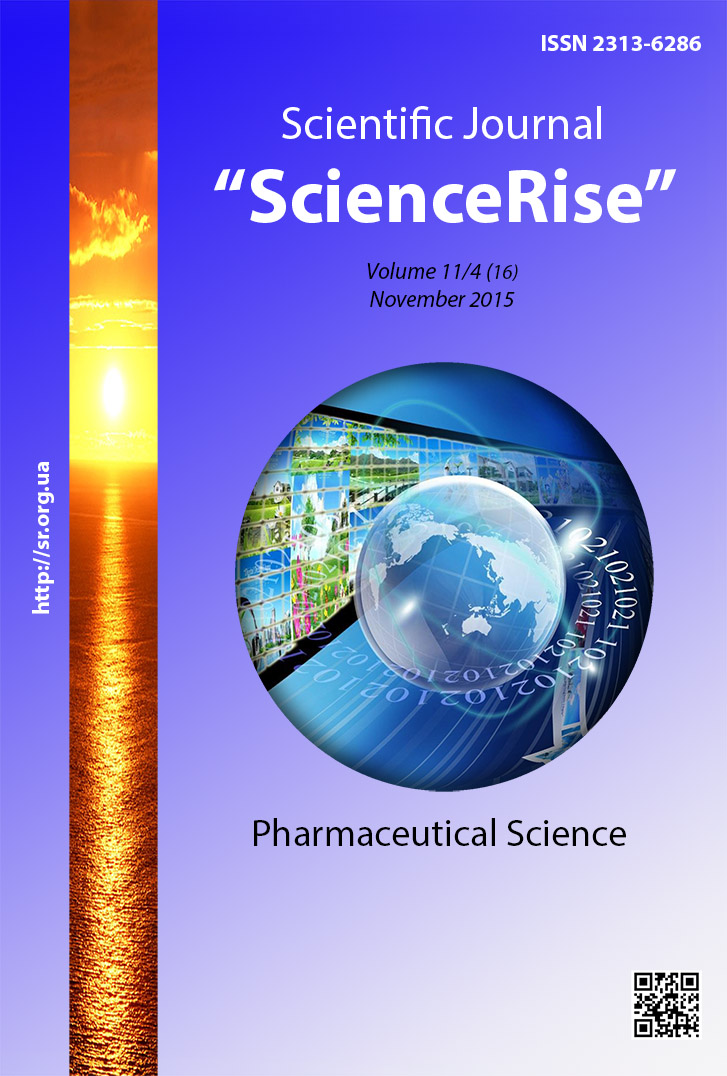Исследование номенклатуры фармацевтических специальностей Казахстана
DOI:
https://doi.org/10.15587/2313-8416.2015.54992Ключові слова:
номенклатура, специальность, клинический фармацевт, фармацевт-информатор, фармацевт-технолог, анкетирование, фармацевт-менеджер, респонденты, экспертыАнотація
Неотъемлемой частью государственной системы мер по реализации прав граждан на охрану их здоровья является фармацевтическая помощь, качество оказания которой в значительной степени зависит от квалификации фармацевтического персонала фармацевтических организаций. В этой связи профессиональная квалификация специалистов находится под контролем государства и является одним из объектов государственного регулирования отношений в сфере обращения лекарственных средств. Существующий государственный контроль над кадровым обеспечением фармацевтической деятельности предполагает осуществление определенных мероприятий, включающих такую задачу как приведение в соответствие фармацевтических специальностей занимаемым должностям персонала.
Цель: Целью нашего исследования явилось обоснование необходимости расширения существующей номенклатуры фармацевтических специальностей РК. Исходя из цели, вытекает и задача исследования, заключающая в научной обоснованности необходимости расширения существующей номенклатуры фармацевтических специальностей РК и внедрения новой специальности «Клинический фармацевт».
Методы: Исследование проводили с использованием аналитических и социологических методов.
Результаты: Нами в результате собственных социологических исследований (анкетирования специалистов-фармацевтов) и анализа специальной литературы доказано, что объемы и уровень профессиональных знаний и обязанностей по той или иной специальности выходят за установленные пределы, раздвигая их.
Выводы: Исходя из вышеизложенного, следует, что расширение номенклатуры фармацевтических должностей является актуальной проблемой, которая требует срочного решения. Мы полагаем, что для этого необходимо определить перечень фармацевтических специальностей в соответствии с потребностями сферы обращения ЛС в современных условиях
Посилання
Solonina, A. V. (2000). O nomenklature farmacevticheskih special'nostej i farmacevticheskih dolzhnostej. Jekonomicheskij vestnik farmacii, 9, 85–89.
Shertaeva, K. D., Ahimova, A. D. et. al. (2008). Razrabotka metodicheskih podhodov k optimizacii informacionnogo obespechenija specialistov (vrachej i farmacevtov) – na osnove komp'juternyh tehnologij. Metodicheskie rekomendacii – Astana, 22.
Fedina, E. A. (2004). Rasshirenie nomenklatury farmacevticheskih special'nostej. Obrazovanie, 43–44.
Skulkova, R. S. (1993). Sovremennye professional'no-dolzhnostnye trebovanija k special'nostjam s vysshim farmacevticheskim obrazovaniem. Moscow, 45–46.
Arystanova, T. A. (2010). Strategija razvitija farmacevticheskogo obrazovanija v Kazahstane. Farmobrazovanie – «Farmacija Kazahstana», 1, 41–44.
Fedina, E. A. (2006). Provizor – konsul'tant: Kvalifikacionnye trebovanija. Obrazovanie, 36–37.
Kareva, N. N. (2004). K voprosu o podgotovke farmacevticheskih kadrov // Materialy mezhdunarodnoj nauchno-prakticheskoj konferencii posvjashhennyj 85-letiju akademii. SPb.: Izdatel'stvo SPHFA, 5–7.
Arystanov, Zh. M. (2004). Sovershenstvovanie professional'noj podgotovki farmacevtov – menedzherov. Farmacija Kazahstana, 4, 43–44.
Val', E. V. (2001). Innovacionnaja model' povedenija rabotnikov farmacevticheskogo profilja. Jekonomicheskij vestnik farmacii, 12, 37–41.
Kulinikova, N. (2005). Nauchnoe obosnovanie metodicheskih podhodov k racional'nomu ispol'zovaniju kadrovyh resursov aptechnyh organizacij v uslovijah konkurentnoj sredy. Tjumen', 20.
Lipen', L. I. (2010). Kadry v zdravoohranenii, farmacii i sisteme social'noj zashhity. Obrazcy dolzhnostnyh instrukcij. Kvalifikacionnye harakteristiki. Dikta, 292.
Mihajlov, Ju. M. (2010). Samye vostrebovannye dolzhnostnye instrukcii. Al'fa – Press, 936.
Kadif, Ju. L. (2010). Kak pravil'no i bystro razrabotat' dolzhnostnye instrukcii. Obrazcy instrukcij. Al'fa – Press, 112.
##submission.downloads##
Опубліковано
Номер
Розділ
Ліцензія
Авторське право (c) 2015 У. М. Датхаев, А. Р. Шопабаева, Г. Ж. Умурзахова, Тина Сулеймановна Прокопенко

Ця робота ліцензується відповідно до Creative Commons Attribution 4.0 International License.
Наше видання використовує положення про авторські права Creative Commons CC BY для журналів відкритого доступу.
Автори, які публікуються у цьому журналі, погоджуються з наступними умовами:
1. Автори залишають за собою право на авторство своєї роботи та передають журналу право першої публікації цієї роботи на умовах ліцензії Creative Commons CC BY, котра дозволяє іншим особам вільно розповсюджувати опубліковану роботу з обов'язковим посиланням на авторів оригінальної роботи та першу публікацію роботи у цьому журналі.
2. Автори мають право укладати самостійні додаткові угоди щодо неексклюзивного розповсюдження роботи у тому вигляді, в якому вона була опублікована цим журналом (наприклад, розміщувати роботу в електронному сховищі установи або публікувати у складі монографії), за умови збереження посилання на першу публікацію роботи у цьому журналі.

